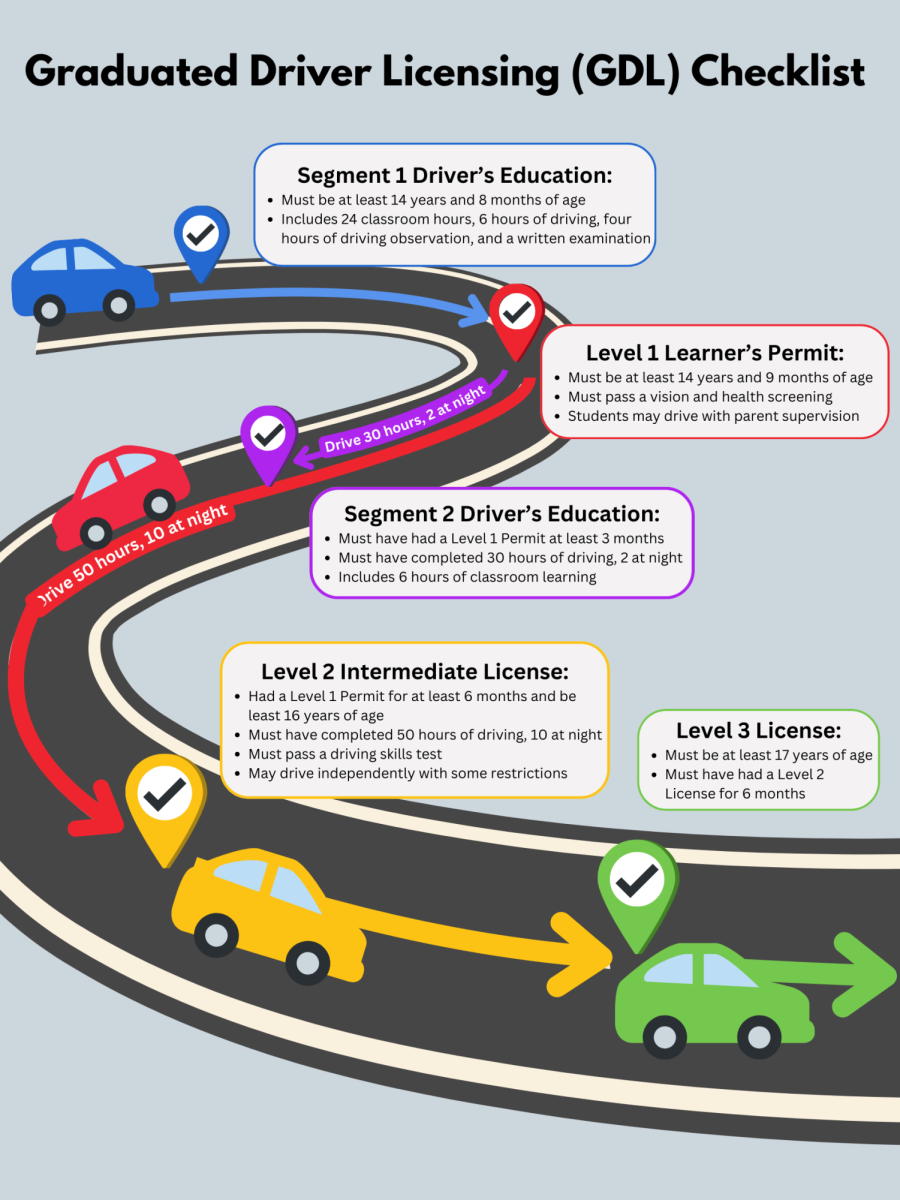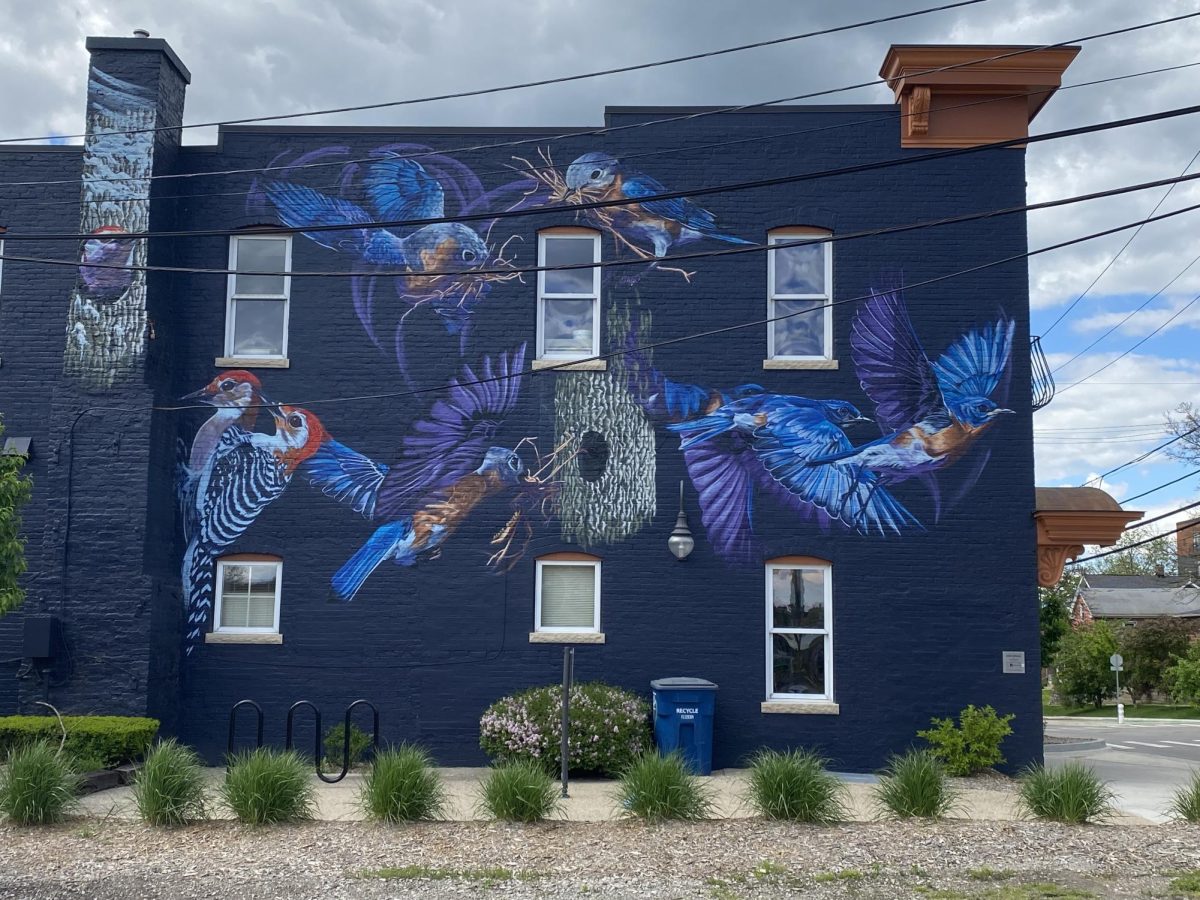When it comes to high school, almost every student will face the daunting additional task of learning how to drive. Requiring time, practice, and commitment, the end of this lengthy process can sometimes feel miles away.
Nonetheless, becoming a driver is a fundamental part of becoming an adult. “Learning to drive is really important, so you can get places on your own,” says Eva Rosenberg (‘27).
Adults probably remember driver’s education as a class offered at their high school. “It was different for me because it was sort of part of the school,” says Bret Trocchio, Skyline A2 Virtual Liaison. “The whole training was different too. We got our learner’s permit, we had to do so many hours, and then we got our licenses. It wasn’t as chopped up.”
In April of 1997, Michigan Legislature moved driver’s education to private training schools as a cost saving measure and created a multi-stage licensing process. According to michigan.gov, the Graduated Driver Licensing (GDL) program includes the Segment 1 course, the Level 1 Learner’s Permit, Segment 2 course, the Level 2 Intermediate License, and finally the Level 3 License.
In Michigan, teenagers can begin driver’s education as early as 14 years and 8 months of age.
However, many don’t start right away. “I don’t really have a reason, it’s just that I haven’t been thinking about it lately,” says Jadyn Aldridge (‘27).
For others, the choice isn’t theirs to make. “It’s not [my parents’] top priority at the moment,” says Mariana Lienhart-Cahuame (‘27).
All Star Driving Education, Official Driving School, A Plus Driving School and Champion Driving School are driving schools many Skyline students attend. There are several ways people find these schools. “I looked it up,” says Hana Ghani (‘27). “I knew I needed to take driver’s ed. Nobody recommended [a place] to me.”

Segment 1
The State of Michigan requires teens to complete 24 hours of classroom education, six hours of behind-the-wheel driving, four hours of driving observation, and a written examination over the course of Segment 1. “Make sure to take time out of your schedule, because it’s time-consuming,” says Natalia Murrell (‘25). “[Don’t] do it at a…stressful time of your life.”
Most schools offer in-person and online classes. In-person classes facilitate a more engaging learning environment, but can require long commutes to the driving school several days a week. “I had to go straight from school to soccer practice, to driver’s ed and then home, and then to the drives,” says Margaret Wancier (‘26). “So basically I had no time to do anything, ever.”
Online classes may be easier for those with busier schedules. However, other students reported these classes are less interesting and have stricter rules. “It’s a lot harder to focus online and there’s a lot more distractions,” says Rosenberg. Students must also sign up for behind-the-wheel drives and observation hours. “It was pretty scary at first and I did not know what I was doing,” says Ella Goldstein (‘26). “[But with] practice, I got more comfortable with driving each time.”
Once the classroom hours and three (out of six) drives have been completed, students will take the written exam. The test has 80 multiple-choice questions, and 56 correct answers are required to pass. “Some of the questions on there I’d never heard about… but it was pretty easy,” says Emma Wong (‘27). “Most of it was common sense.” For others, the test was more difficult. “I thought it was hard because I didn’t pay attention,” says Goldstein.
Level 1 Learner’s Permit
Students will receive their Level 1 learner’s permit after completing all of the requirements for Segment 1. “I’m going to go to the Secretary of State next week to get [my permit],” says Rosenberg.
Students will then log hours of with parent-supervised driving. For those with busy schedules, getting in these hours can sometimes be difficult. “I just randomly drive to school sometimes,” says Desmond Avis (‘25). “[But] we only have two cars and they’re both used a lot, so I can’t really drive them that much.”
Segment 2
Once students have had their learner’s permit for at least three months and have driven at least 30 out of the 50 hours required for a Level 2 License, they are ready to start Segment 2 of driver’s ed. “It was pretty short. It just teaches you about crashes,” says Amelia Repp (‘24).
With only six hours of classroom instruction, many people agreed that Segment 2 felt like a small addition to Segment 1. “I didn’t even have to take notes at all, I just remembered it all,” says Lorenzo Soto Booker (‘24).
Driving Skills Test

Students then must complete the remainder of the 50 hours of parent-supervised driving. Once they’ve had their permit for at least 6 months, they’re ready for the driver’s test. “[The test included] pulling up to a line…, backing up into a parking space, parallel parking, normal parking, and then just the general suburban road test,” says Petra Bora (‘24).
Most people agreed the hardest part of the driving test was parallel parking. “Don’t go to a place that specifically says they don’t do parallel parking, because they do. It is required, and you will have problems,” says Michelle McGuinty (‘24).
Level 2 Intermediate License
After passing this test, teens are eligible for their Level 2 driver’s license. They are allowed to drive independently with some restrictions. For example, they cannot drive between 10:00 pm and 5:00 am, and cannot drive more than 1 person under the age of 21 outside of their family. “It’s honestly not hard to work around, but it’s kind of annoying because my parents are strict about it,” says Murrell.
Overall, students are required to complete almost 100 hours of classroom, driving and observation to receive a Level 2 license. Many agree it can take over six months to become fully comfortable with driving. As time-consuming as it is, the graduated driver’s licensing program is well worth the time. “My favorite part about driving is being able to go where I want [and] not having to wait for someone else to take me,” says Marisa Moe (‘25).
Level 3 License
Once you have had your Level 2 license for at least six months and are at least 17 years of age, you can receive your Level 3 license: the final stage of the Michigan GDL. Congratulations, you are now a graduated driver!







